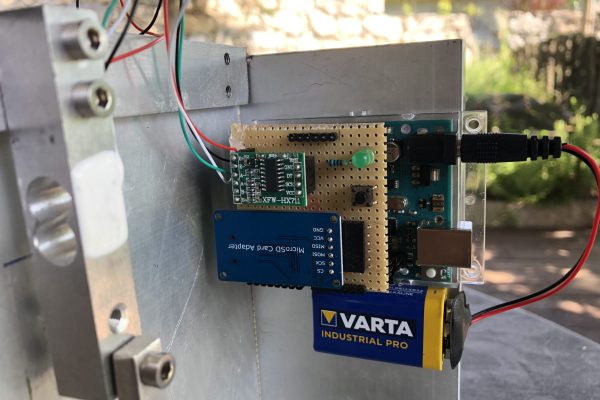Old Test Stand
To have data about the performance of rocket motors a test stand was developed. The test stand allows us to measure and record the force exerted by the motor during propellant burn.
On this page I talk about the stand structure, the hardware used and the software developed for the stand controller and for processing the data obtained.
Test stand structure
The test stand is made of aluminum. The structure is essentially composed of two parts:
- A frame vertically where the load cell (component in charge of reading the force coming from the rocket) is fixed;
- A frame to support the rocket during firing;
Eletronics and Firmware
An Arduino microcontroller is used to collect the data coming from the load cell. The microcontroller will store on a microSD card a .txt file with all the data collected from the load cell (raw data) and the corresponding time instants for each of the samples (in mS).
When necessary, the same hardware is also used to create the calibration files. The calibration process aims to establish a correspondence between the values coming from the load cell and the effective force applied by the rocket motor. The load sensor exhibits a near-linear behavior.
* The available schematic already included some improvements that migrated to the new test stand: remote ignition, WiFi connection…
Data processing software
A program written in python is used to process the data collected by the microcontroller. This program creates an excel sheet that contains the data originated from the stand readings.
The resulting spreadsheet contains a table that shows us the applied force at various times during the firing.
Thus, I can finally evaluate the result of an engine firing.

